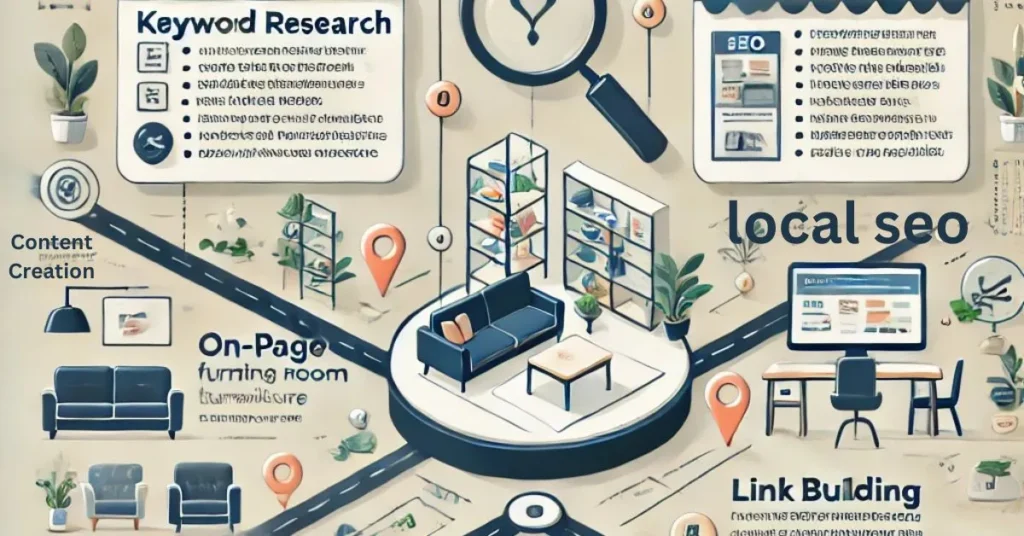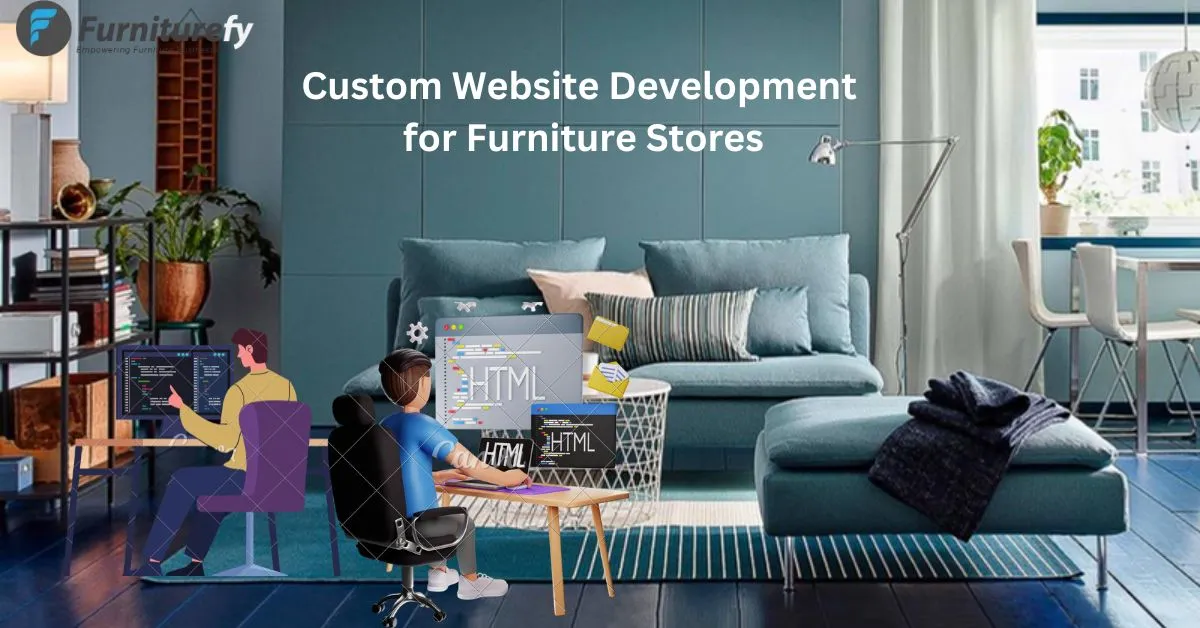Custom Website Development for Furniture Stores: Build, Sell & Grow Online
In the ever-evolving e-commerce world, creating a custom website development for your furniture store can offer unmatched opportunities to expand your business and connect with customers. Whether you’re starting a new venture or upgrading your existing online presence, building an effective and SEO-optimized website can help you grow your business.
Why a Custom Website?
A custom website development tailored to your furniture store’s needs provides a unique and professional platform for showcasing your products. Unlike pre-built templates, a custom site is designed with your specific business goals in mind, offering flexibility, scalability, and the ability to scale as your business grows.
Key Features for Furniture Store Websites
User-Friendly Design
A clean, easy-to-navigate design is crucial for improving user experience. Simple product categories, intuitive navigation, and a smooth checkout process encourage visitors to browse more and convert into paying customers.
Responsive Design
Your website should look great on any device. With an increasing number of customers shopping on mobile devices, ensuring that your website is responsive—adapting to different screen sizes—is essential for providing a seamless shopping experience.
Product Pages with High-Quality Imagery
In the furniture business, visuals are everything. Your product pages should feature high-quality images, clear descriptions, and detailed specifications. Allow customers to zoom in on product photos and view your furniture from multiple angles.
SEO-Optimized Content
Optimizing your website with the right keywords and content structure will help improve search engine rankings. Use keywords like “modern sofas,” “handcrafted wooden furniture,” and “luxury bedroom sets” on relevant pages, blog posts, and product descriptions.
E-commerce Integration
An e-commerce platform like WooCommerce, Shopify, or custom-built solutions should be integrated into your website. This will allow customers to browse, select, and purchase furniture directly from your site, streamlining the buying process.
Customer Reviews and Testimonials
Displaying customer reviews and testimonials on your website can build trust and provide social proof. Positive feedback from previous buyers can influence new customers and increase your conversion rates.
Payment Gateway Integration
Offering various payment methods like credit cards, PayPal, and other secure options will enhance customer satisfaction and reduce cart abandonment rates.
Fast Loading Speed
A slow website can result in a high bounce rate. Optimizing images and reducing unnecessary scripts can improve load times, keeping customers engaged and more likely to make a purchase.
SEO Strategies for Furniture Store Websites
SEO is the backbone of online growth. Here’s how to optimize your website:

Keyword Research
Identify relevant keywords that potential customers are searching for, such as “custom living room furniture,” “best home office furniture,” or “eco-friendly furniture options.” Integrate these keywords naturally into your content.
On-Page SEO
- Use descriptive titles and meta descriptions for each page.
- Incorporate keywords into headings (H1, H2) and content.
- Ensure all images are properly tagged with ALT text to improve image search visibility.
Content Creation
Regularly update your blog with posts on furniture trends, maintenance tips, and interior design ideas. This not only keeps your website fresh but also improves SEO rankings by targeting long-tail keywords.
Local SEO
If your furniture store has a physical location, be sure to include your business address, phone number, and hours of operation. List your business on Google My Business and other local directories to improve your local search rankings.
Link Building
Gain high-quality backlinks from other reputable websites in the furniture or interior design industry. This can improve your website’s domain authority and increase organic search traffic.
Mobile Optimization
With most searches happening on mobile devices, ensuring that your website is mobile-friendly is crucial for SEO. Google ranks mobile-friendly websites higher in search results.
Selling & Growing Your Furniture Store Online
Once your custom website is live, it’s time to start selling and growing your online business:
Effective Marketing Campaigns
Leverage social media platforms, email marketing, and paid ads to drive traffic to your website. Showcase your furniture on Instagram and Pinterest, and engage with potential customers through Facebook ads and Google Ads.
Customer Retention
Offer loyalty programs, discounts, and special offers to keep customers coming back. Email marketing can help nurture relationships with existing customers and alert them to new product launches or sales events.
Analytics
Utilize tools like Google Analytics to monitor traffic, track user behavior, and measure conversions. Regularly assess your data to identify trends and make informed decisions about future business strategies.
Conclusion
A custom website development, SEO-optimized website is key to building a successful online furniture business. It not only enhances your brand’s online presence but also drives traffic, improves customer experience, and boosts sales. By implementing the right features and strategies, your furniture store can build, sell, and grow online efficiently.
FAQs
The timeline can vary based on complexity, but a custom website typically takes 4-8 weeks to design, develop, and launch.
Costs depend on the features and functionalities you require, ranging from a few thousand dollars for a basic website to more for advanced features like e-commerce.
While SEO can be done in-house, hiring an expert can ensure your website is properly optimized for search engines, helping you rank higher and attract more customers.
Yes, most custom websites are built with a user-friendly content management system (CMS), allowing you to easily update product listings, blog posts, and other content.





